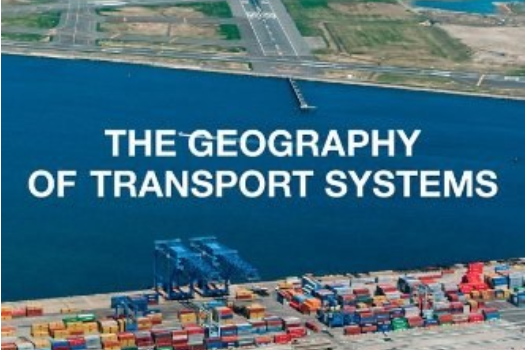作者簡介
Jean-Paul Rodrigue is an Associate Professor in the Department of Global Studies and Geography at Hofstra University, New York.
Claude Comtois is Professor of Geography at the Universityof Montreal, Canada, andis affiliated with the Research Centre on Enterprise Networks, Logistics and Transportation of the same institution.
Brian Slack is Distinguished Professor Emeritus at Concordia University, Montreal, Canada.
媒體推薦
The Geography of Transport Systems provides an up-to-date and thorough text for introductory courses in Transportation Geography. With both conceptual and methodological elements, this book provides students with qualitative and quantitative tools for approaching analyses of transport systems. Whether their interests are economic, social, or environmental, students will find material in this accessible text to meet their needs.
Kevin Curtin, George Mason University, USA
This is a well-structured textbook for transportation geography. It effectively covers almost all geographical aspects of transportation systems. For each chapter, the concept-method organization is very useful for students to understand the theoretical aspects of transportation and how these theories can be applied in practice. The contents covered in this book are highly relevant to current research and practice. Dr. Changshan Wu, University of Wisconsin-Milwaukee, USA
This textbook, written by three well-known transport geographers, is a good example of the vitality and vibrancy of contemporary work in transport geography, especially in terms of its relevance to directly related subfields such as economic geography.
Andrew R. Goetz, University of Denver, USA and the Journal of Economic Geography
目錄
1. Transportation and Geography Concepts: What is Transport Geography? Transportation and Space The Geography of Transportation Networks Methods: Definition and Properties of Graph Theory Measures and Indices of Graph Theory Geographic Information Systems for Transportation (GIS-T) Case Study: Teaching Transport Geography 2. Transportation and the Spatial Structure Concepts: Historical Evolution of Transportation Transport and Spatial Organization Transport and Location Future Transportation Methods: The Notion of Accessibility Network Data Models Case Study: UPS and the Management of Distribution Networks 3. Transportation and the Economy Concepts: Transport and Economic Development Transportation and Commercial Geography Transport Costs Transport Supply and Demand Methods: The Transportation Problem (Linear programming) Market Area Analysis Case Study: The Financing of Transportation Infrastructure 4. Transportation Modes Concepts: A Diversity of Modes Intermodal Transportation Passengers or Freight? Methods: Technical Performance Indicators Symbolization of Transport Features in a GIS Case Study: Maersk Shipping Line 5. Transportation Terminals Concepts: The Function of Transport Terminals Terminals and Location Ports and Rail Terminals Airports Methods: Gini Coefficient Delphi Forecasting Case Study: Chicago and Intermodal Rail Terminals 6. International Trade and Freight Distribution Concepts: Transportation, Globalization and International Trade Commodity Chains and Freight Transportation Logistics Methods: Spatial Interactions The Gravity Model Case Study: Commodity Chain Analysis 7. Urban Transportation Concepts: Transportation and Urban Form Urban Land Use and Transportation Urban Mobility Urban Transport Problems Methods: Traffic Counts and Traffic Surveys Transportation / Land Use Modeling Case Study: City Logistics 8. Transport, Energy and Environment Concepts: Transport and Energy The Environmental Impacts of Transportation Transport and Sustainability Methods: Transport Environmental Management Case Study: Environmental Practices in Sweden Maritime Transport 9. Transport Planning and Policy Concepts: The Nature of Transport Policy The Policy Process Transport Planning Transport Safety and Security Methods: Cost-Benefit Analysis Case Study: Security, Transport and Health Planning: The Challenge of Pandemics

